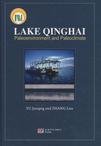青海湖古气候与古环境
出版时间:2008-1 出版社:科学出版社 作者:余俊清 页数:160
内容概要
《青海湖古气候与古环境(英文版)》以青藏高原东北部六万.0以来的气候与环境演变为主要研究内容,以多学科方法研究获得了青海湖岩芯多项环境指标,并以此为依据,分析和论证了青海湖MIS3、MIS2、末次冰期向全新世过渡时期,以及全新世等各时段的水位与气候变化,及其与东亚季风演变的关联。
书籍目录
1 Introduction 1.1 Aim and scope 1.2 Previous investigations 1.2.1 1961—1962 expeditions to Lake Qinghai 1.2.2 Sino-Swiss expedition in 1985 1.2.3 1987 drill-core project 1.2.4 Post-1990 investigations 1.3 Paleoclimate studv OfChina:a briefreview 1.3.1 East Asian monsoon—the modem climate syrstem 1.3.2 East Asian paleomonsoon2 Geographic,Geologieal and Limnological Setting of Lake Qinghai 2.1 Geological setting 2.2 Geomorphological setting 2.3 Geographic setting 2.3.1 Climate 2.3.2 Vegetation 2.3.3 Rivgrs in the catchment 2.4 Limnological setting 2.4.1 Water chemistry 2.4.2 Physical characteristics 2.4.3 Biological characteristics 2.5 Peripheral lakes 2.5.1 Lake Erhai 2.5.2 Lake Gahai 2.5.3 Haiyan Bay 2.5.4 Sand.Island Lake3 Investigation Methods 3.1 Introduction 3.2 Field investigation 3.2.1 Seismic profiling 3.2.2 Coring 3.3 Laboratory investigation 3.3.1 Radiometric dating 3.3.2 Magnetic suscelatibility:core logging 3.3.3 Total organic carbon and total nitrogen,and C/N ratio 3.3.4 Macrofossil indicator 3.3.5 Total inorganic carbon and carbonate content 3.3.6 X-ray diffraction and scanning electron microscopy (SEM) 3.3.7 Oxygen and carbon stable isotopes 3.4 Notes on investigation methods4 Seismic Investigation,Lithologic Study of Sediment Cores and Radiometric Dating 4.1 Introduction 4.2 Sub—boRom profiles from the 3.5 kHz seismic investigations 4.3 Radiometric dating 4.3.1 Radiocarbon dating and sedimentation rates 4.3.2 210pb dating and sediment accumulation rates 4.4 Lithologic units 4.4.1 Lithologic units ofcore Q14B 4.4.2 Lithologic units ofcore Q16C 4.4.3 Core correlation and boundary description5 Lake Levels and Climate Change During the Holoeene 5.1 Introduction 5.2 Results and interpretations 5.2.1 14c dated 1ithostratigraphy 5.2.2 TOC.TN and C/N ratio 5.2.3 TCC and carbonate mineral record 5.2.4 Fossil seeds from rooted aquatic plant- 5.2.5 Ostracode shell stable.isotopic record 5.2.6 Pollen record- 5.2.7 Magnetic susceptibility 5.3 Holocene lake levels and climate reconstruction 5.4 A correlation with proxy records from other studies 5.5 Holocene climate variability ofEast Asia 5.5.1 Early Holocene climate regime 5.5.2 Mid-Holocene climate and Holocene Optimum 5.5.3 Late Holocene climate 5.5.4 Climate forcing and feedbacks during the Holocene, 5.6 Summary and conclusions6 Abrupt Changes in Climatic Conditions Across the Lateglacial/Holocene Transitit on the NE Qinghai-Tibet Plateau 6.1 Introduction 6.2 Resultsfromamulti-proxyinvestigationoncores Q14B and Q16C 6.2.1 Distinct lithostratigraphic units 6.2.2 Paleobotanic evidence 6.2.3 Core logs ofmagnetic susceptibility 6.2.5 Oxygen stable.isotopic record 6.2.6 Total nitrogen content 6.3 Reconstruction oflake levels and limnological conditions ……7 Paleoenvironmental Signatures from Carbonate Minerals and Stable Isotopic Rations from Lake Qinghai8 Paleoenvironment and Paleoclimate Conditions During the Marine Isotopic Stage 3 and the Last Glacial MaximumReferencesAcknowledgments
章节摘录
5.3 Holocene lake levels and climate reconstruction Defined by AMS 14C ages and distinct lithostratigraphic character as well as core correlation results (refer to Chapter 6 for details), the onset of the Holocene occurred at 10 14C ka BP. The beginning of the early Holocene hydro-climate regime is marked by a wet pulse, as evidenced by a distinct lithologic change, negative shifts in both TCC and (Figure 6.1 a-e). This wet pulse terminated the carbonate playa environment pre-existed at 10.3-10 ka BP (Yu and Kelts, 2002b). The early Holocene warm and wetter climate conditions are indicated by our multi- proxy records. First, our data of TN, TOC and C/N ratio indicate an abrupt increase in the lakes primary productivity (see Section 5.2.2), that was brought about by abrupt increase of summer temperature (Yu and Kelts, 2002b). Because Lake Qinghai is located in the cold and semi-arid area of the highland, the water temperature of the lake today is pretty low, around 15 ℃ in the water column of upper 2 m thick during the warmest months (July-August). The rate of organic production depends largely on the self-cycling of nutrient within the lake. The abrupt warming near the onset of the Holocene has been documented in a number of lake environmental archives (e.g. Gasse et al., 1991; Hodell et al., 1999; Li and Yu, 2002; Xiao et al., 2004). In the case of Lake Qinghai, solar radiation exerts strong impact on the highland lake, particularly during the period when solar insolation was close to its summer maximum of the Holocene. We therefore attribute the increase of organic productivity in the paleo-lake during the early-middle Holocene to the Holocene warming associated with the insolation maximum. Second, the highest rate of authigenic carbonates, as indicated by our TCC and carbonate mineral composition, is the consequence of the most enhanced summer evaporation related, to a large extent, to the Holocene insolation maximum as well. Last but not least, the sediment evidence indicates that the paleo-lake was 2-8 m in depth at -10-8 ka BP. This reconstruction is based mainly on the evidence that in-situ dropped Ruppia seeds are well preserved in at least four thin layers of Unit IIIb with the quantity 180 seeds/mE, and that the seeds occasionally present either below or above carbonate nodular layers. It is evident that precipitation from 10 ka BP enhanced if compared with the period of 10.7-10 ka BP when a negative water budget occurred (Yu and Kelts, 2002b). Our interpretation is that the precipitation during the early Holocene (-10-8 ka BP) was higher than that during any earlier periods of the pre-Holocene. This is simply because the evaporation was most intensive during -10-8 ka BP, but the lake was still deeper than any preceding periods between 14 and 10.7 ka BP when a lower evaporation resulted from a cold climate.
图书封面
评论、评分、阅读与下载
